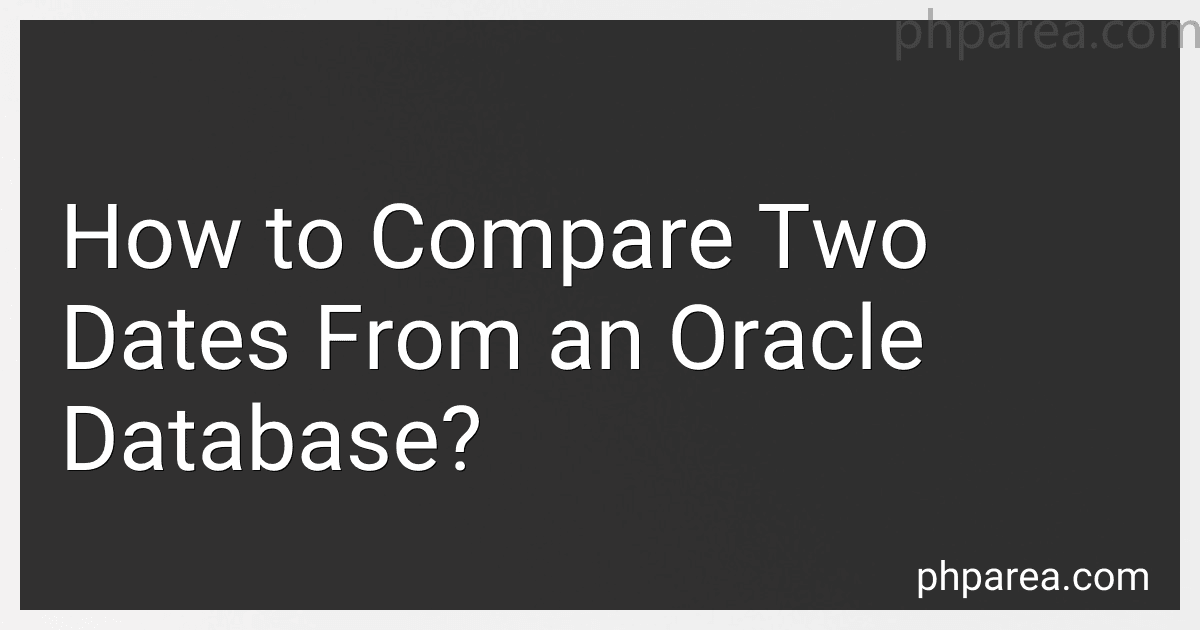Posts (page 8)
-
 5 min readTo filter list values in DynamoDB, you can use the CONTAINS condition in a Query or Scan operation to check if a list attribute contains a specific value. This can be used to filter the results based on the presence of a particular value in a list attribute. Additionally, you can also use the NOT_CONTAINS condition to filter out items that do not contain a specific value in the list attribute.
5 min readTo filter list values in DynamoDB, you can use the CONTAINS condition in a Query or Scan operation to check if a list attribute contains a specific value. This can be used to filter the results based on the presence of a particular value in a list attribute. Additionally, you can also use the NOT_CONTAINS condition to filter out items that do not contain a specific value in the list attribute.
-
 4 min readTo push to an array in MongoDB, you can use the $push operator in an update operation. The $push operator appends a specified value to an array. Here is an example of how to push a value to an array in MongoDB: db.collection.updateOne( { _id: ObjectId("5f6479c9161e0f3cbfacb4b7") }, { $push: { fruits: "banana" } } ) In this example, we are pushing the value "banana" to the "fruits" array in a document with the specified _id.
4 min readTo push to an array in MongoDB, you can use the $push operator in an update operation. The $push operator appends a specified value to an array. Here is an example of how to push a value to an array in MongoDB: db.collection.updateOne( { _id: ObjectId("5f6479c9161e0f3cbfacb4b7") }, { $push: { fruits: "banana" } } ) In this example, we are pushing the value "banana" to the "fruits" array in a document with the specified _id.
-
 4 min readIn order to enable CTR encryption in RocksDB, you first need to set up a custom encryption object that includes the encryption algorithm and key. This can be done by creating a new instance of rocksdb::BlockCipher and initializing it with the desired encryption algorithm and key. Once the encryption object is set up, you can then pass it to RocksDB when opening a database by setting the Encryption option to the encryption object that was created.
4 min readIn order to enable CTR encryption in RocksDB, you first need to set up a custom encryption object that includes the encryption algorithm and key. This can be done by creating a new instance of rocksdb::BlockCipher and initializing it with the desired encryption algorithm and key. Once the encryption object is set up, you can then pass it to RocksDB when opening a database by setting the Encryption option to the encryption object that was created.
-
 3 min readTo use regexp_like for wildcard search in Oracle, you can provide a regular expression pattern as the second argument in the function. The regular expression pattern can include wildcard characters such as '.', '*', and '+'.For example, to search for all values in a column that start with the letter 'A', you can use the following SQL query: SELECT * FROM table_name WHERE REGEXP_LIKE(column_name, '^A.
3 min readTo use regexp_like for wildcard search in Oracle, you can provide a regular expression pattern as the second argument in the function. The regular expression pattern can include wildcard characters such as '.', '*', and '+'.For example, to search for all values in a column that start with the letter 'A', you can use the following SQL query: SELECT * FROM table_name WHERE REGEXP_LIKE(column_name, '^A.
-
 5 min readTo compare two dates from an Oracle database, you can use the built-in functions and operators provided by Oracle. You can use the ">" (greater than), "<" (less than), ">=" (greater than or equal to), "<=" (less than or equal to), "=", and "<>" (not equal to) operators to compare two date values. You can also use the TO_DATE function to convert date values to the same date format for comparison.
5 min readTo compare two dates from an Oracle database, you can use the built-in functions and operators provided by Oracle. You can use the ">" (greater than), "<" (less than), ">=" (greater than or equal to), "<=" (less than or equal to), "=", and "<>" (not equal to) operators to compare two date values. You can also use the TO_DATE function to convert date values to the same date format for comparison.
-
 4 min readTo convert an extracted value from a datetime column to a character data type in Oracle, you can use the TO_CHAR function in your SQL query. This function allows you to format the date and time values as needed.
4 min readTo convert an extracted value from a datetime column to a character data type in Oracle, you can use the TO_CHAR function in your SQL query. This function allows you to format the date and time values as needed.
-
 5 min readTo generate an ID in Oracle, you can use the SEQUENCE feature. First, you need to create a sequence using the CREATE SEQUENCE statement. You can specify the starting value, increment value, and other properties of the sequence.Once the sequence is created, you can use the NEXTVAL function to generate a new ID each time it is called. For example, if you have a sequence named my_sequence, you can generate a new ID by calling my_sequence.NEXTVAL.
5 min readTo generate an ID in Oracle, you can use the SEQUENCE feature. First, you need to create a sequence using the CREATE SEQUENCE statement. You can specify the starting value, increment value, and other properties of the sequence.Once the sequence is created, you can use the NEXTVAL function to generate a new ID each time it is called. For example, if you have a sequence named my_sequence, you can generate a new ID by calling my_sequence.NEXTVAL.
-
 5 min readThe GROUP BY function in Oracle is used to group rows that have the same values into summary rows. This can be helpful when performing calculations on groups of data, such as finding the total sales for each product category.To use the GROUP BY function in Oracle, you need to specify which columns you want to group by in your SELECT statement.
5 min readThe GROUP BY function in Oracle is used to group rows that have the same values into summary rows. This can be helpful when performing calculations on groups of data, such as finding the total sales for each product category.To use the GROUP BY function in Oracle, you need to specify which columns you want to group by in your SELECT statement.
-
 5 min readTo find the schema name of a table in Oracle, you can use the following SQL query:SELECT table_name, owner FROM all_tables WHERE table_name = '<your_table_name>';This query will return the table name along with its schema name. You can replace '<your_table_name>' with the name of the table you are trying to find the schema name for. The "owner" column in the result set will display the schema name of the table.
5 min readTo find the schema name of a table in Oracle, you can use the following SQL query:SELECT table_name, owner FROM all_tables WHERE table_name = '<your_table_name>';This query will return the table name along with its schema name. You can replace '<your_table_name>' with the name of the table you are trying to find the schema name for. The "owner" column in the result set will display the schema name of the table.
-
 4 min readTo get the name of a month in SQL Oracle, you can use the TO_CHAR function with the 'Month' format. This function takes a date or timestamp as input and converts it to a specified format.
4 min readTo get the name of a month in SQL Oracle, you can use the TO_CHAR function with the 'Month' format. This function takes a date or timestamp as input and converts it to a specified format.
-
 5 min readTo export data from Oracle to MongoDB, you can use a tool like Oracle GoldenGate or Oracle Data Integrator to extract the data from Oracle database tables and then load it into the MongoDB database. You may need to create a data migration or ETL (Extract, Transform, Load) process to transform the data from Oracle's relational format to MongoDB's document-based format. This may involve mapping the data types, structures, and relationships between the two databases.
5 min readTo export data from Oracle to MongoDB, you can use a tool like Oracle GoldenGate or Oracle Data Integrator to extract the data from Oracle database tables and then load it into the MongoDB database. You may need to create a data migration or ETL (Extract, Transform, Load) process to transform the data from Oracle's relational format to MongoDB's document-based format. This may involve mapping the data types, structures, and relationships between the two databases.
-
 4 min readTo return a VARCHAR in Oracle, you can simply select the column containing VARCHAR data from a table using a SQL query. For example, you can use the following query:SELECT varchar_column FROM your_table_name;This query will retrieve the VARCHAR data stored in the "varchar_column" column of the specified table ("your_table_name"). You can further customize the query by adding conditions or joining multiple tables if needed.
4 min readTo return a VARCHAR in Oracle, you can simply select the column containing VARCHAR data from a table using a SQL query. For example, you can use the following query:SELECT varchar_column FROM your_table_name;This query will retrieve the VARCHAR data stored in the "varchar_column" column of the specified table ("your_table_name"). You can further customize the query by adding conditions or joining multiple tables if needed.